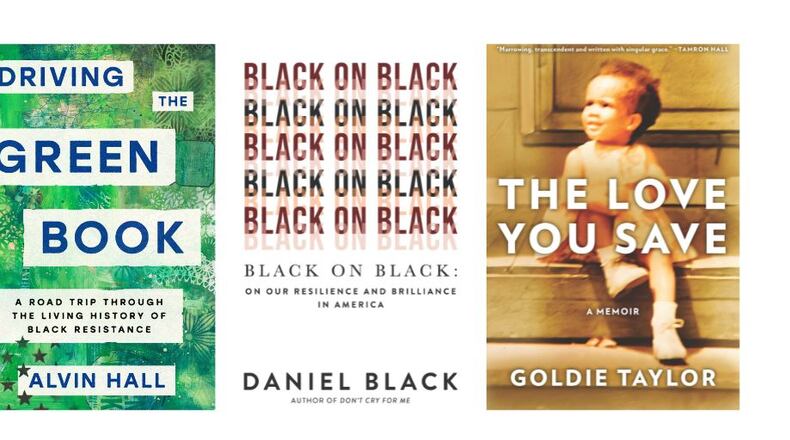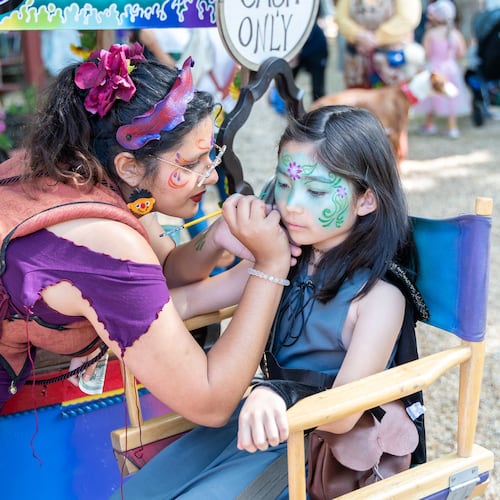Black History Month kicks off a day early with the Jan. 31 publication of three nonfiction books that explore the Black experience. One is a personal memoir about overcoming adversity, one is a collection of essays that challenge beloved institutions, and one is a historical examination of a sublime act of Black resistance.
“The Love You Save” (HarperCollins, $28.99) is a harrowing, inspirational memoir by journalist Goldie Taylor about growing up poor in St. Louis during the ‘70s and ‘80s. A former Atlantan now based in Boston, Taylor spent her chaotic childhood moving back and forth between two households. One belonged to her aspirational, free-spirited mother, a single parent with bad taste in men who supported her three children as a cocktail waitress. The other belonged to her stern, no-nonsense Auntie Gerald, who worked Taylor like a domestic servant and begrudged her a decent meal.
A mere 25 miles separated the houses, but they were worlds apart. Taylor’s mother lived in St. Ann, a white suburb with good schools, a mall and an ice cream parlor. Auntie Gerald lived in East St. Louis, a Black inner-city neighborhood home to “abandoned, burned out houses, or trash-littered lots, or heroin addicts perched on milk crates.”
Regardless of their different trappings, both environments exposed the young girl to life-altering traumas. Despite all the ways the adults in her life failed her, Taylor was loved. But her saving grace was her sharp mind and her passion for reading, which she taught herself to do at age 3. As she grew up, a few observant souls recognized Taylor’s potential and helped her achieve her dreams for a better life.
Because of the subject matter, “The Love You Save” can be difficult to read, but it’s written in such a breezy style and a spirit of forgiveness that the pages turn fast.
Goldie Taylor will be in conversation with Brenda Wood at the Atlanta History Center at 7 p.m. on Feb. 2. For details go to atlantahistorycenter.com.
“Black on Black” (Hanover Square Press, $27.99) by Daniel Black, a professor of African American studies at Clark Atlanta University and author of the novel “Don’t Cry for Me,” is a collection of essays that offer a bold, unflinching examination of the Black experience, ranging in topic from identity and self-love to integration and police brutality.
Black’s essays range in tone from confessional to iconoclastic, the latter reserved for his criticisms of HBCUs and the Black church, two institutions he deeply loves, which makes his conflicted stance on the topics so illuminating.
“My struggle was that I loved the same institution I hated. Still do,” he writes about the church. “Its music soothes my soul when nothing else can … Black people were free, or at least freer, there than any other place in the world … Outside the church, people didn’t hug me or love me quite so earnestly.”
And yet, “(t)he downfall of the Black church is that it keeps teaching its own bondage … We fear the Christian God the same way we feared slave captors,” he writes. Many Black churches “depend upon Eurocentric understandings of God and spirit in ways that make them hate themselves.”
More specifically, he cites the church’s failure to give women leadership roles, its condemnation of sexual fluidity and its failure to confront power structures in the face of recent killings of Black men and women like George Floyd and Breonna Taylor.
“Black on Black” reads like a passionate rallying cry by a man hellbent for change.
“Driving the Green Book: A Road Trip Through the Living History of Black Resistance” (HarperCollins, $27.99) by Alvin Hall delves into the annual guide for Black travelers published for 30 years beginning in 1936. The book is not the travelogue of backroads and historic pitstops the title suggests, but a history of the publication’s evolution from 16 pages centered on New York to 80-page books encompassing Alaska, California and Maine.
Travel wasn’t something Blacks typically engaged in until the Great Migration when they moved north for jobs and later returned to the South to visit family, explains Hall. Because of Jim Crow laws, Black travelers needed a guide to hotels, restaurants and gas stations where they would be welcomed and feel safe.
“A car driven by a Black person, containing Black passengers and bearing an out-of-state license plate, was a vulnerable target, especially on the two-lane roads that went through the center of many small towns,” writes Hall.
Many towns didn’t have hotels that would accommodate Blacks; instead listings included private homes that would provide overnight stays. Hall cites Dr. James Franklin, a Black physician in Mobile, Alabama, whose guestbook, which now resides in the History Museum of Mobile, includes the signatures of such luminaries as opera singer Marian Anderson and baseball legend Jackie Robinson.
Eventually Hall does get around to highlighting some of the communities that hosted Black travelers during the Green Book era, including Paradise Valley in Detroit, Walnut Street in Louisville and Farish Street, Jackson, Mississippi.
“Driving the Green Book” paints a painful picture of one aspect of the oppression Blacks endured during Jim Crow, while also illustrating the power of the human spirit to subvert an unconscionable system and still experience joy.
Suzanne Van Atten is a book critic and contributing editor to the Atlanta Journal-Constitution. Contact her at svanatten@ajc.com.
About the Author
The Latest
Featured

